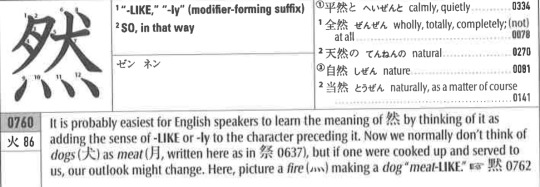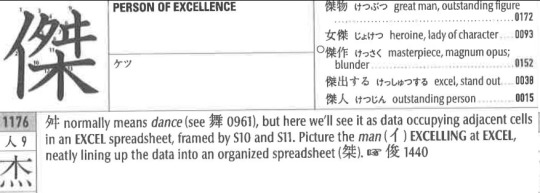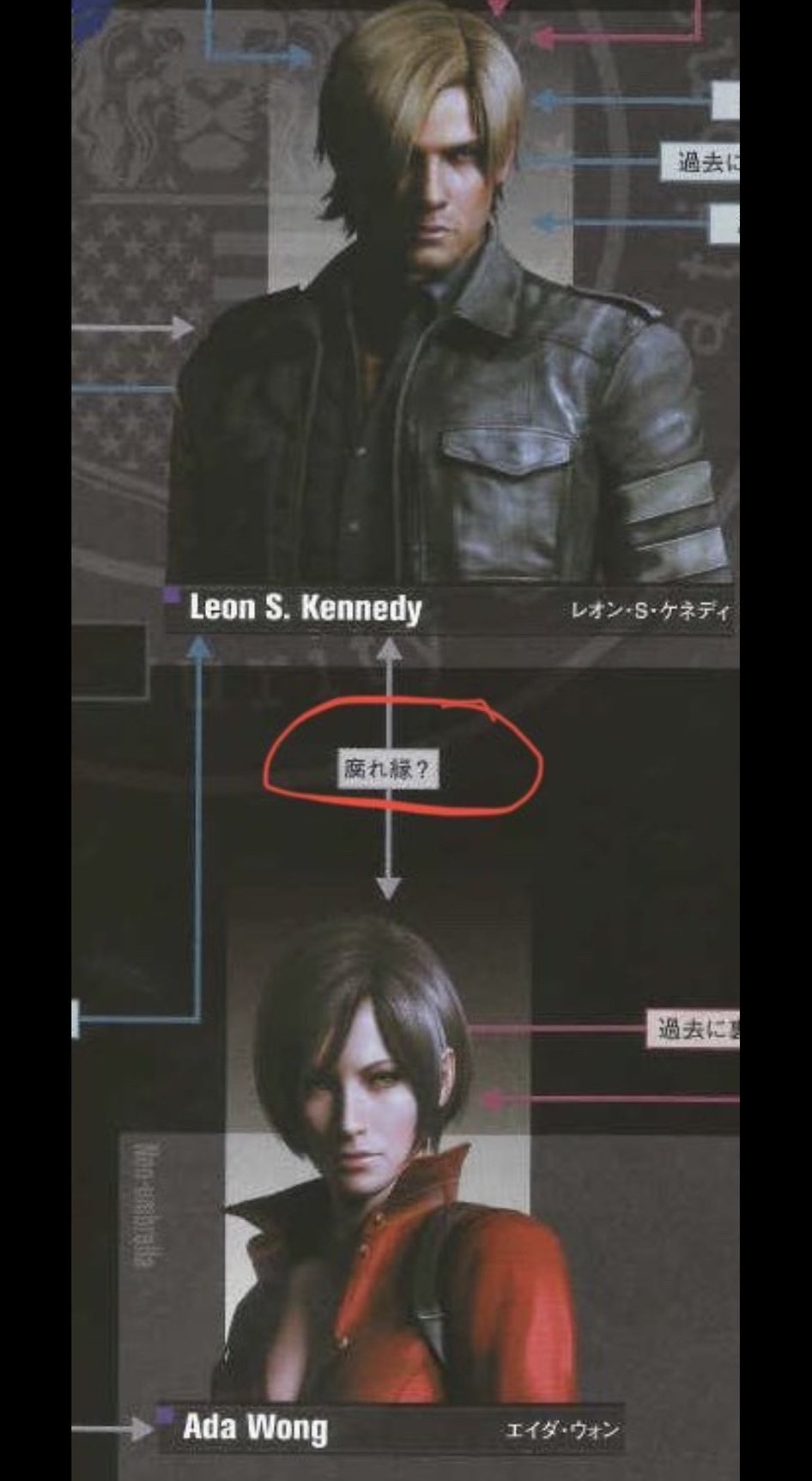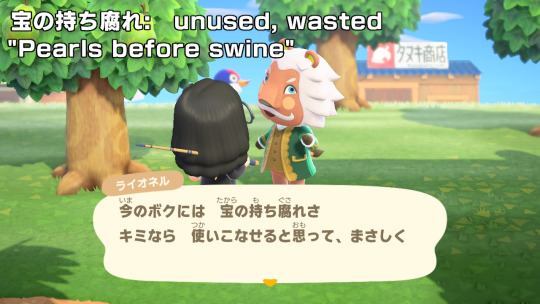#日本語の��強
Explore tagged Tumblr posts
Text
Japan Housing Websites (part one)
Want to move to Japan? Me too! Lately I’ve seen a lot of Instagram pages dedicated to showing off cheap homes in Japan. These pages usually just link back to a Japanese real estate website, so I’d like to list some handy vocabulary to help you navigate the sites and find some houses on your own!
Note: This post was made with intermediate level Japanese learners in mind. It's meant to be a vocabulary list with visual examples, not an all-inclusive house buying guide. A complete list of vocab words can be found at the end of the post. For general website navigation, I’d recommend the RikaiChan / RikaiKun extensions which will display a translation of each word you mouse over.
What Websites?
I really like SUUMO, so that will be the site I use for the example pictures. But any website will have more or less the same words!
Navigating the Website

[ 1 ] Creating an Account会員(かいいん)登録(とうろく):Member Registration
[ 2 ] Search探す(さがす):Search / Find This word will come up a lot! The search function may also appear as... 検索(けんさく):Search 物件(ぶっけん)検索:Property Search
Suumo has a nifty map on the front page. If you know the region you'd like to search in, you can choose it here.
[ 3 ] Renting 借りる(かりる):Rent (Borrow) 賃貸(ちんたい):Lease / Rent
[ 4 ] Purchasing買う(かう):Buy
[ 5 ] House Terminology If you've taken a Japanese class, you may have learned that the Japanese word for house is 家 or いえ. Unfortunately, this short and simple word isn't used much on real estate websites. The following terms are typically used instead.
一戸建て(いっこだて):Detached Building A standalone house, as opposed to an apartment or condo.
新築(しんちく)一戸建て:New Buildings
中古(ちゅうこ)一戸建て:Old Buildings 中古 can mean "old", "used", or “secondhand”, none of which sound ideal, but all it means is that the house that has been lived in previously. This is where you find the cheap ones!
Finding Houses

Once you have the region and building type selected, you’ll see a new map you can use to select the prefecture. I'll highlight a few key search methods on this screen.
[ 1 ] Search by Area(エリア)
Click on a prefecture to bring up a checklist of cities and districts. At the bottom of the list, you'll see two options: refining the search further or proceeding with the checked options.

「チェックした市区郡の町名を絞り込む」 "Narrow by town names of checked cities/wards/districts"
市区郡(しくぐん):"City Ward District" 町名(ちょうめい):Town Name 絞り込む(しぼりこむ):Narrow / Refine
「この条件で検索する」 "Search with these conditions"
条件(じょうけん):Condition / Term
The orange number shows how many total properties were found with the checked selections. Click the blue search button if you want to jump straight to the houses without refining the search.
[ 2 ] Search by Railway(沿線)or Station(駅)
Click on a prefecture to bring up a checklist of railways. At the bottom of the list, you'll see two options: refining the search further or proceeding with the checked options.

「チェックした沿線の駅を絞り込む」 "Narrow by stations of checked railways"
沿線(えんせん):Railway / Track 駅(えき):Station 絞り込む(しぼりこむ):Narrow / Refine
「この条件で検索する」 "Search with these conditions"
条件(じょうけん):Condition / Term
Once again, the orange number shows how many total properties were found with the checked selections. Click the blue search button if you want to jump straight to the houses without refining the search.
[ 3 ] Search by Map(地図、ちず) Clicking here will open up a much more detailed map that you can scroll through! Definitely the easiest option, which is why I put it last. :)
The End.
Here's the complete vocab list for ease of viewing:
会員(かいいん):Member 登録(とうろく):Registration 探す(さがす):Search / Find 検索(けんさく):Search 物件(ぶっけん)検索:Property Search 借りる(かりる):Rent (Borrow) 賃貸(ちんたい):Lease / Rent 買う(かう):Buy 一戸建て(いっこだて):Detached Building 新築(しんちく)一戸建て:New Buildings 中古(ちゅうこ)一戸建て:Old Buildings 市区郡(しくぐん):"City Ward District" 町名(ちょうめい):Town Name 沿線(えんせん):Railway / Track 駅(えき):Station 絞り込む(しぼりこむ):Narrow / Refine 条件(じょうけん):Condition / Term
#Japan#Japanese#japanese language#japanese translation#japanese langblr#japanese studyspo#japanese studyblr#japanese learning#japanese study#learning japanese#japan house#moving to japan#japanese vocabulary#日本語#日本#日本語の勉強#日本語勉強
178 notes
·
View notes
Text
JLPT N5 - あげる
At its simplest, あげる means “to give”. At the N5 level, it’s used for giving physical things such as presents, money, water (to plants), food (to pets), etc. There is another way it can be used, but that is for a later JLPT level. For now, let’s get into ONE of the ways you can talk about giving in Japanese.
First, here is the vocabulary for this post.

【The Grammar of あげる】
Basically there are 4 parts to every あげる sentence that you should be thinking about. The first 3 are marked with particles and the last part is the verb.

Here is an example sentence:
① 【けんじは】【トムに】【腕時計を】あげた。
= As for Kenji, to Tom, a watch gave
= Kenji gave Tom a watch.
In a sentence like #1 it’s easy to see the 3 parts clearly marked with particles and then the verb at the end. Unfortunately you WILL NOT always see simple sentences like this, so let’s look at each part one by one, along with the cultural context behind あげる.
【The Giver】
Most of the time, the giver will be marked by the は (or sometimes the が) particle. This is because あげる sets up the action of giving from the giver’s perspective.
Sometimes, it is obvious who the giver is, so that phrase can be completely left out of the sentence.
② 【会社の人たちに】【お土産を】あげると思う。
= to the people at (my) company, souvenirs will give I think
= I think I’m going to give the people at my company souvenirs.
In this sentence it would be clear that the speaker is the giver. Therefore it’s not necessary to include a 私は phrase.
【The Relationship Between Giver and Receiver】
Before we move on, let’s get into a very big cultural difference between Japan and English-speaking cultures. When you use あげる, you have to think about the relationship between the giver and the receiver. In English, this doesn’t affect the words we use, but in Japanese it is actually very important when it comes to word choice. Take a look at this image:

The green circle would include close friends, family, your lover, etc. Pets and plants would also fall into this circle. Outside of the green circle are strangers, teachers, professors and depending on your job, your customers. This is because showing respect is directly connected to setting up a kind of psychological distance. You have to work hard and gain trust before you are moved into the green circle.
Some people, like coworkers and bosses, may be inside the green circle in some situations, but outside of it in other situations! A common example is when you go out drinking with coworkers. As the alcohol flows throughout the night you’ll notice that psychological space slowly disappearing - that is until the next day at work. They might act like the person you drank with was a COMPLETELY different person!
This way of thinking is called うちそと, and can be a very difficult part of Japanese culture for many foreigners. Here’s the thing: the culture of うちそと extends to the concept of giving as well.
【Giving Culture and あげる】
When it comes to giving, there are 4 situations where it’s appropriate to use the verb あげる:
① When you give something to someone inside your inner circle
② When you give something to anyone outside your inner circle
③ When someone in your inner circle gives something to someone outside your inner circle
④ When someone outside your inner circle gives something to another person outside your inner circle
Numbers 1-3 can be described as the act of giving while moving from a smaller circle to a bigger circle. Number 4 can be described as giving that doesn’t happen in your inner circle.

There are of course more possibilities when it comes to giving (and receiving). However, those situations won’t use the verb あげる!
【What Is Being Given】
In most sentences, whatever is being given is very simply marked with the を particle. However, there are times when the を particle or the positioning of what is being given will change. Take a look at these three example sentences:

Example 3a is the “default version”. The doll is marked with the を particle so we immediately know that it will be given to someone (the section manager’s wife).
For example 3b I want you to imagine that you are in a souvenir shop. You’ve bought a couple of things already, but you haven‘t decided which gifts will go to whom. All of a sudden, you see a doll that catches your eye. You immediately think to yourself, “that doll is perfect for the section manager’s wife”. Putting the item being given (that is, the doll) at the head of the sentence shows that 1) you are putting the focus of your sentence on that item and 2) there is a kind of impulsiveness to the giving. It’s kind of an instant decision.
Compare that with example 3c. Now I want you to imagine that you are in your house. You bought a bunch of dolls but you haven’t decided which one will go to whom. You pick up one of them and after some thought you say, “Ok I’ll give THIS one to the section manager’s wife.” Marking the doll with は serves to emphasize that there are several dolls, but you are highlighting one of them for a specific reason. It also shows that it WAS NOT an instant decision; some thought went into your decision.
This kind of distinction takes a really long time to understand and really “feel” but I hope that by explaining it to you now, it might stay with you somewhere deep inside your mind. You might even experiment with using sentences like 3b and 3c and surprise your Japanese friends!
【Alternative Verbs】
Lastly, let’s talk about your choice of verbs. You can actually adjust the level of “closeness” that the reader / listener feels by changing the verb that you use! あげる, あげた, あげます, あげました, etc. is used for a “default” level of closeness.
However, if the receiver is someone in a higher social position (for example a professor, a doctor, a boss, a politician, etc.) you would instead use the similar verb さしあげる. This verb actually serves to humble yourself - and thus elevates the listener / reader.
④ 【この本は】ただでさしあげます。
= as for this book, for nothing will give
= I will give you this book for free.
From this sentence you can tell that the giver and the receiver are on different levels, socially. (This is a little different than うちそと.) The listener will feel an elevated level respect simply by hearing the さしあげる verb.
On the other hand, if the receiver is someone VERY close to you, you can show that closeness by using the verb やる instead of あげる. やる is often used with pets and plants.
⑤ 【彼女は】【犬に】【えさを】やるのを忘れた。
= as for her, to (her) dog food giving forgot
= She forgot to give her dog food.
As it turns out, this is why I keep on saying “what is given” instead of “a present” or “a gift”. Giving water to plants or food to pets is not a present or a gift.
Here is a visual representation of the 3 different verbs that you can use when talking about giving (from the giver’s perspective):

Here is 1 last example:

= as for apples I give to you, there are none
= I don’t have any apples to give you.
As you can see in #6, it’s possible to state a giver, a receiver and then あげる in order to describe what is being given. Once you do that, you will then have a topic which you can then go on to make a comment about!
【Conclusion】
So there you have it! あげる and its related verbs (さしあげる and やる) all express the idea of giving from the giver’s perspective. However, you have to keep the Japanese concept of うちそと in mind. Later we’ll talk about giving but from the receiver’s perspective. Stay tuned!
Rice & Peace!
-AL (アル)
👋🏾
#日本語#japanese studyblr#japanese grammar#japanese language#isshonihongo#japanese culture#あげる#jlptn5#jlpt#japanese#learn japanese#japanese lesson#japanese study#studying japanese#japaneselessons#learnjapanese#japanese langblr#japanese vocab#japanese vocabulary#language#languages#language study#language studyblr#language blr#日本語の勉強#にほんご
117 notes
·
View notes
Text
部屋探し|Apartment Hunting

Let me share with you my current struggles on finding a place to stay in Japan with this long vocabulary list!
住宅(じゅうたく)housing, residential building
住宅街(じゅうたくがい)residential area
最寄り駅(もよりえき)nearest train station
共同住宅(きょうどうじゅうたく)residential complex, apartment house
不動産屋(ふどうさんや)real estate agent
物件(ぶっけん)object, property (real estate)
ネット上(じょう)on the internet
掲載する(けいさい)post, insert (advertisement)
家賃(やちん)rent
共益費(きょうえきひ)common fee, utility fee
加算する(かさん)add
月額(げつがく)monthly amount
初期費用(しょきひよう)initial costs
入居する(にゅうきょ)move into
翌月(よくげつ)next month
翌月分(よくげつぶん)next month's rent
礼金(れいきん)key money (fee paid for rental rights)
敷金(しききん)deposit
保証金(ほしょうきん)deposit
清掃費(せいそうひ)cleaning fee
火災保険料(かさいほけんりょう)fire insurance fee
内見(ないけん)viewing
賃貸(ちんたい)lease, rent
賃貸借契約(ちんたいしゃけいやく)rental contract
借り主(かりぬし)debtor, tenant
貸主(かしぬし)lender, landlord
大家さん(おおや)landlord
一時に(いちどき)at once
滞納(たいのう)falling behind (with a payment)
Moving into a Japanese property comes with high initial costs which can be broken down into numerous different fees. Unfortunately, share houses are not necessarily fully excluded from this, but it really depends on the company. I'm glad that I could take some time to work and save up money before going to Japan. The first month will be very expensive.
#語彙リスト#japanese langblr#langblr#studyblr#japanese studyblr#learning japanese#japanese vocabulary#japan#japanese#study blog#japanese language#japanese studyspo#study motivation#studyspo#study notes#vocabulary#vocabulary list#jlpt n1#nihongo#日本語#日本語の勉強#life in japan
292 notes
·
View notes
Text


2025/01/31
i’ve been doing some exercises to clean up my handwriting and i got an ereader, which i’ve been loving so far
#lupusmaxima#dark academia#bookblr#chaotic academia#brown#coffee#beige#literature#studyblr#classical literature#kindle#kibo#ereader#books#handwriting#calligraphy#journal#bujo#bullet journal#manga#chi’s sweet home#日本語の勉強
72 notes
·
View notes
Text







some of my favourite kanji memory aids I've seen in The Kodansha Kanji Learner's Course
#flowers.txt#japanese#japanese language#learning japanese#langblr#language learning#japanese langblr#japanese learning#language lab#日本語#日本語の勉強#漢字#漢字の勉強
30 notes
·
View notes
Text
Keeping up with my goals!


I'm struggling a lot with the reading section and I really don't know how to fix my reading skills. Everyone suggests to read more but it's so hard to focus and keep reading when you don't understand things and get demotivated. If anyone has any tips for me I would really appreciate it!
Hope you guys are doing great!
#japanese#japanese language#jlpt#japanese books#jlpt n2#languages#studyblr#studying#language learning#study with me#日本語の勉強#にほんご#日本語
138 notes
·
View notes
Text
About the Japanese relationship charts circulating around RE Twitter…
I've been seeing these images used to spark discussion... and arguments. Shipping wars aside, I was more intrigued by this Japanese term used to describe Leon and Ada’s relationship.
I want to explain these words in more detail, so this post will be about that + answering questions that some might ask. I'm also including Leon and Claire's chart as well.
Note: I am currently studying Japanese. I made this post partly because I like to understand advanced terms that are unique to a specific language. Despite this, my explanation is not immune to errors.

Leon and Claire’s relationship chart in Resident Evil: Infinite Darkness (2021).

Explaining this first because this is fairly easy to understand.
信頼関係 (しんらい��んけい・shinraikankei) - A relationship of mutual trust.
Kanji breakdown:
信頼 > reliance, trust, faith, confidence // 関係 > relationship
It should come as no surprise to anyone that Leon and Claire trust and rely on each other.
Q. ‘Is the term exclusively used for them only?’
No. 信頼関係 was also used to describe Leon's relationship with President Graham (and Jason or Patrick).

Leon and Ada’s relationship chart in Resident Evil: 6 (2012).

This is the term that others can't seem to grasp well (I mean they kinda do, but they also misinterpret it weirdly). In the English version, their relationship is described as ‘fatal ties’, but I don't care about that - I'm focusing on the Japanese version.
腐れ縁 (くされえん・kusareen) - an undesirable but inseparable relationship.
Kanji breakdown:
腐れ > to rot // 縁 > relations
The highlight of this word is the kanji 腐る, which is a negative verb used to describe something rotting/decaying.
The "inseparable relationship" part may be interpreted as romantic to some; as some shippers say, 'they are fated' (more on that later). But first, we need to understand what 腐れ縁 means in more context. Here are some excerpts I've taken from multiple sources.
離れようとしても離れられない関係 - A relationship that you know you should let go of, but can't. (This is consistent with OG RE4 Leon's line of 'she's a part of me I can't let go'.)
Note: 離れ (はなれ・hanare) mostly means 'to let go (of something/someone)' and 'to separate/to give up/to part ways'.
離れよう、縁を切ろうとしても断ち切れない好ましくない関係 - An unfavorable relationship that you can't cut off no matter how much you try to.
Note: 好ましい (このましい・konomashii) means desirable. 好ましくない (このましくない・konomashikunai) is the negative conjugation of it. 好ましくない関係 - undesirable relationship.
Just from this alone, you can see that their dynamic is difficult to understand. And that's what 腐れ縁 is.
Q. ‘Is the word 'rotten relationship' an accurate translation of the term?’

Google Translate translates this word LITERALLY. I think there is no true English equivalent of 腐れ縁, but yeah, 'fatal ties' is the term closest to it.
Q. ‘Can Leon and Ada be described as 'fated'?’
The answer is yes... and no. Here is another excerpt I find to be interesting:
「運命の相手」 を思わせるようなニュアンス ですが、 実際には好ましくない関係に使われることが 多い言葉です。- The term 腐れ縁 does have a nuance that is reminiscent of "destined/fated partner (or in other words, 'the one')", but in reality, it is often used to refer to undesirable relationships.
Q. ‘So... Is their relationship that bad?'
The answer to this question will depend on your own interpretation of Leon and Ada's dynamic - and that's why people are quite divided when it comes to them. It is said that 腐れ縁 can be positive... in the sense that if you experienced it before, you can now have a better judgment of people (lol). But in some cases, a long-lasting rotting relationship (like theirs) could mean that they at least have some level of mutual trust only they understand. It can work... but even the article I've read wasn't so clear on how it can work, so.

If you made it this far, I hope you found this interesting. :)
#kusare en truly is the perfect term to describe the relationship between these two in my opinion#leon kennedy#leon s kennedy#ada wong#claire redfield#resident evil#adorathoughts#analysis#日本語の勉強
42 notes
·
View notes
Text
[Japanese→English] @smallplasticgoose Japanese Duck Idiom — Color Coded Translation
Link to original post

⎯⎯⎯⎯⎯⎯⎯⎯⎯⎯⎯⎯⎯⎯⎯⎯⎯⎯⎯⎯⎯⎯
鴨が葱を背負って来る
かもがねぎをしょってくる
A duck comes carrying leeks on its back
This is an idiom equivalent to “Along comes a fool begging to be departed from his money.”
⎯⎯⎯⎯⎯⎯⎯⎯⎯⎯⎯⎯⎯⎯⎯⎯⎯⎯⎯⎯⎯⎯
Please correct me if I made a mistake
#color coded translation#japanese to english#japanese#japanese language#study japanese#japanese lesson#japanese vocab#japanese learning#learn japanese#learning japanese#japanese culture#日本語#日本語勉強中#日本語の練習#日本語の勉強#日本語勉強#japanese vocab list#japanese vocabulary
13 notes
·
View notes
Text
i love when i go back to a book or comic or drama that used to be too hard and........actually understand it. nothing gives me a better sense of progress or improves my motivation more. a million times better than passing a test for me.
#leveling up on wanikani has NOTHING on comprehending a page of text that doesn't have furigana#langblr#japanese langblr#japanese#日本語の名前#日本語の勉強#llu
77 notes
·
View notes
Text

To make studying fun, I often play video games in Japanese. The other day, I found a neat idiom when an NPC gave me a gift.
宝の持ち腐れ:literally, “a treasure rotting in hand” 宝:たから、"treasure" の:"of" / possessive particle 持ち:もち、"have" or "hold" 腐れ:ぐされ、"rot"
It has the same meaning as the English phrase “pearls before swine”. Essentially, it means that something nice / valuable is being wasted on someone who does not appreciate it or use it to full potential.
Putting it all together to translate the text, we get:
今のボクには 宝の持ち腐れさ As for me right now, [it's like] pearls before swine.
キミなら 使いこなせると思って、まさしく。 If it's you, I thought [you'd be] able to make use of [it], indeed.
After saying this, he gave me a rug. Not the treasure I was hoping for!
Corrections always welcome.
#japanese#japanese translation#japanese study#japanese studyblr#japanese studyspo#日本語#日本語の勉強#翻訳練習#studying japanese#japanese learning#japanese langblr#japanese language
142 notes
·
View notes
Text
9.1) The Basics of the Receptive and Causative Forms
Hey everyone! In this post I’d like to go over some basics before we break down receptive and causative sentences.
Here is your vocabulary, short and simple:

【The Endings】
First, let’s look at the endings:

It’s time to reveal something about these endings. These are not just endings. In actuality they are helping verbs! THAT is the reason why the final -る can be inflected.

As a reminder, here is how we can inflect that final る:
-る ➡️ -ない、-たい、-ます、-れば、-た、-て
Notice that we attach those endings directly to the verb stems. Does that remind you of anything?? Yes, れる、せる、られる and させる are all Ichidan verbs!
On top of that, remember that -ない、-たい and -ます can further inflect (because they are ALSO helping verbs!) giving you lots and lots of possibilities. This info will come in handy a bit later.
【Receptive Sentences】
In the next post when we get to receptive sentences, there are 4 parts of each sentence that I want you to think about. Here is a visualization that will help:

As is always the case in Japanese, what comes at the end is super important so let’s “zoom in” and start by looking at the 2 end sections.
【The Internal and Received Actions】
Because れる / られる and せる / される are actually verbs, it’s important to recognize that every receptive sentence actually contains 2 actions going on simultaneously. There is the action of “receiving” and there is an “internal action”. Let’s look at some examples:
① 褒められた
When you see this at the end of a receptive sentence, in your mind you can break this word down into two different actions - the action that was “received” and the “internal” action. The two parts are:
られた = received 褒め (to praise) is the internal action = was praised
In this case, once you figure out the actions, you only need to figure out who received the praising and who did the praising.
Here’s another example:
② 買われました
Let’s break down example 2:
れました = received (polite) 買わ (to buy) is the internal action = was bought (polite)
Because this is a Godan verb, the stem of the helping verb is れ. That won’t change. However the ending of the helping verb CAN change, and in this case it’s ました. Does it all make sense?
One more example:
③ 尊敬されたい
In this case, we have a する noun. No problem!
れたい = wants to receive 尊敬さ (to respect) is the internal action = wants to be respected
Now, is there anything you notice about those internal actions!?
For Ichidan verbs, する and 来る, the internal actions are just the verb stems! For Godan verbs, the internal action will always be the stem + its あ sound adapter.

The れる and られる verbs might have different endings too, but we already know the possibilities so it’s no problem. Now it should be much much easier to understand what is going on in all receptive sentences!
【Causative Sentences】
Causative sentences express the idea of either forcing or allowing an action to happen. These sentences basically have the same things going on as receptive sentences, except for the helping verbs at the end.

Whether the action was forced or allowed to happen, the end result is that the topic or subject “caused” the action. This is where the name causative comes from. Let’s look at some examples:
④ 食べさせた させた = forced or allowed to 食べ (to eat) is the internal action = allowed to / made to eat
When we get to the post on the causative form we will see how you know if it’s the “forced to” or the “allowed to” interpretation.
Here’s one more example:
⑤ アパートに入れさせなかった させなかった = didn’t force or allow to アパートに入れ (entering the apartment) is the internal action = was not let into the apartment
In example 5 it’s unlikely that someone was not forced to go into an apartment, so we go with the “not allowed to” interpretation.
【The Particles】
The particles in receptive and causative sentences will be very important. は、が、に、を and から will all be working together in harmony to express certain nuances. We’ll talk more about this in detail in the respective posts.
【Conclusion】
Well there you have it! Receptive and causative sentences were very hard for me to understand when I started studying Japanese. They still trip me up at times, but it helps to have this baseline of knowledge.
Now I believe that you are ready to look at full receptive and causative sentences. See you next post!
Rice & Peace,
– AL (アル)
👋🏾
#japanese verbs#japanese grammar#japanese receptive form#learning japanese#learn japanese#japanese studyblr#studyblr#japanese language#language#langblr#日本語の勉強#日本語#日本語勉強#にほんご#isshonihongo
35 notes
·
View notes
Text
オフィスで耳にした単語(1)
名詞 // Nouns
演習(えんしゅう)practice 開発費(かいはつひ)development cost 奇数(きすう)uneven number 後半(こうはん)latter half 借金(しゃっきん)debt, loan 実践(じっせん)practice, implementation 消防設備点検(しょうぼうせつびてんけん)Fire Safety Equipment Inspection 消防(しょうぼう)fire fighting 設備(せつび)equipment 前半(ぜんはん)first half 貸与(たいよ)loan, lending 点検(てんけん)inspection 添付ファイル(てんぷ)attached file 備品(びひん)fixtures, furnishing, equpiment 部署(ぶしょ)department 予算(よさん)budjet
動詞 // Verbs
該当する(がいとう)meet (qualifications), falling under, being applicable 加担する(かたん)assist, participate, support 換算する(かんさん)convert (currency) 記載する(きさい)list, note, record 計算する(けいさん)calculate 実施する(じっし)carry out 借金する(しゃっきん)borrow money 出社する(しゅっしゃ)go to the office 請求する(せいきゅう)demand, charge, bill 使いこなす(つかいこなす)handle, master 投資する(とうし)invest 並び替える(ならびかえる)arrange 配布する(はいふ)distribute 儲ける(もうける)make profit, earn
形容詞 // Adjectives
細かい(こまかい)small 精神的な(せいしんてき)mental, spiritual, moral
その他 // Other
気合が入る(きあい が はいる)be motivated 掲題の件ですが…(けいだい)concerning the matter mentioned before (common expression in business emails) ご一読ください(いちどく)please, read it through 承知いたしました(しょうち)Understood 即座に(そくざ)right there on the spot 即興で(そっきょう)improvised, without any preperation 本日の勤務を終了いたします(ほんじつ は きんむ を しゅうりょう いたします)I am finishing work for today
#オフィスで耳にした単語#語彙リスト#敬語#japanese langblr#langblr#japanese language#language learning#japanese vocabulary#japanese studyblr#japanese#japan#learning japanese#study notes#studying#study movitation#nihongo#日本語#日本語の勉強#working in japan
188 notes
·
View notes
Text


2025/02/24
got some gorgeous bookish items from quirkycupco and i’m so happy with them! i can also finally not worry about the screen of my e-reader in my backpack now that i have a sleeve for it
#lupusmaxima#dark academia#bookblr#chaotic academia#brown#coffee#beige#literature#studyblr#classical literature#book#ereader#kindle#kobo#chi’s sweet home#日本語の勉強#learn japanese#stationery
21 notes
·
View notes
Text
iirc niko’s name is spelled in katakana (ニコ) on the letters from her mom, which makes me think it’s referencing the term nikoniko (ニコニコ). as in, the onomatopoeia for smiling. my girl’s name is literally smile, of course she’s a perfect ray of sunshine.
#dead boy detectives#niko sasaki#dead boy detective agency#dc#ell shut up#SHE’S SO CUTE I LOVE HER.#niko sasaki 🤝 emu ootori <-girls whose names are basically smile#(also it’s not *really* an onomatopoeia but like. what’s the equivalent. it’s not a direct translation it’s not the verb idk man)#(also also yes this is why niconicodouga is called that)#今僕は日本語が上手じゃない、ごめんねー(-_-;)#僕は来年の夏フランスに留学してから、今フランス語を勉強しる
77 notes
·
View notes
Text
My dad just gave me the best reason to keep studying japanese.
My second year of uni started, it's getting pretty tough and with my mental and other issues it's been really difficult to even work on my comic, let alone keep studying japanese. Long story short i haven't done a thing to improve my speaking or reading skills in the past two months.
But today my dad was cleaning up his work space/packing up his stuff. He's changing works. He brought home lots of stuff, including this funny looking usb. He gave it to me to check it out. He said he has downloaded a movie on it a long time ago and forgot to give it to me (guess constantly forgetting stuff runs in my family 😅). So today i put the usb in my pc and i found a single movie there: anthem of the heart. I was so happy! Until i played it. Just japanese, no subtitles. And i couldn't understand as much as i thought i would.
So, i'm rolling my sleeves up and logging into my renshuu account, dusting my grammar book that has been successfully collecting dust on my bookshelf, pulling out my study notebook and continuing studying!
And here i thought satoshi kon would keep me going but i already have all his work with subtitles so i guess that wasn't such a strong motivation...but this? Yup, it sure seems like a challenge! Also side eying my no longer human copy written in japanese 👀
30 notes
·
View notes
Text
今日のいいこと: 授業の前にアヒルを見ました :D 🦆🦆
Today's good thing: I saw a couple of ducks before class :D
11 notes
·
View notes